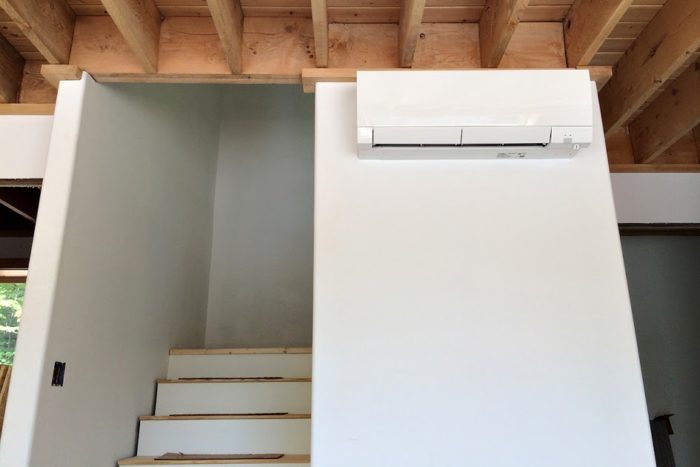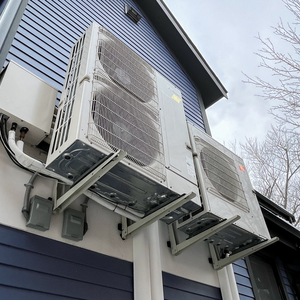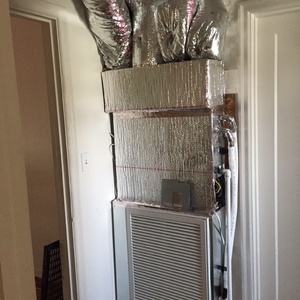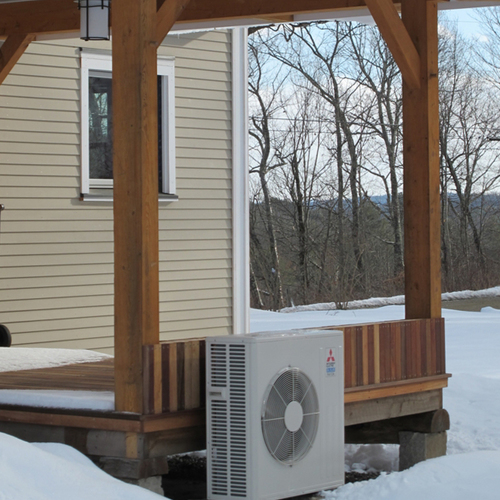
Image Credit: Brian Post
A GBA reader by the name of Green Heron has recommendations in hand from an HVAC contractor for heating and cooling a Climate Zone 2 house currently undergoing renovations. But he’s not sure whether the recommendations make sense.
The contractor has proposed a four-zone system using a mix of ductless and ducted minisplits, Green Heron explains in a post in GBA’s Q&A Forum. A single 3-ton compressor would run the four indoor heads — two ducted units installed in the attic, and ductless units in both the kitchen and the living room.
“I don’t like the idea of putting units in the attic,” Green Heron writes. “I’m also concerned about sizing. Seems like there’s less room for error with minisplits.”
Green Heron has some questions about the specifics of the proposal, such as how difficult it would be to mount a ducted minisplit on a ceiling and run ducts through interior walls, and whether he could use a single ductless unit for both the living room and kitchen.
Weekly Newsletter
Get building science and energy efficiency advice, plus special offers, in your inbox.
Overall, the heating and cooling loads as calculated by a third party are giving Green Heron pause for thought. In some rooms, heating loads are twice as high as cooling loads. Taking the house as a whole, the heating load has been calculated at 27,230 Btu/h with a cooling load of 22,197 Btu/h.
“As you see from the load calcs, some rooms have a big difference between cooling and heating loads,” Green Heron says. “If I size for the cooling load (due to my climate zone), some rooms won’t keep up with heating demand in the winter. If I size to the heating load, some rooms will be significantly oversized in the cooling season.”
Are Green Heron’s concerns well placed? That’s the topic for this…

This article is only available to GBA Prime Members
Sign up for a free trial and get instant access to this article as well as GBA’s complete library of premium articles and construction details.
Start Free TrialAlready a member? Log in















One Comment
Mini split
We added a small 180 sqft solar room two years ago. Since we live in upstate New York had high SGHC windows installed. Our south facing glass box is seperated from the rest of the the rest of the first floor living area (living room, kitchen, dining area) by two sets of patio doors when open the total open floor space is 900 sqft. We expected to keep the doors shut during the peak of the heating and cooling seasons, We installed a Mitsubish MSZ-FH12na in the solar room primarily to heat/cool the solar room. Given the amount of glass I wanted a bigger unit. However, our HVAC contractor was convinced the the 12,000 could easily handle the job. Turns single our MSZ-FH12na manages to maintain the entirety first floor at a temperature of 75-78 floor even when the outside temperature is up to 100 F. How is it possible for a 12,000 Btu unit to cool a space of twice the cooling load? Our house is well insulated, tight and we use a variety of window treatments to help control heat loss and gain through our windows. This includes using outside curtains to block solar gain in the solar room.
Log in or become a member to post a comment.
Sign up Log in